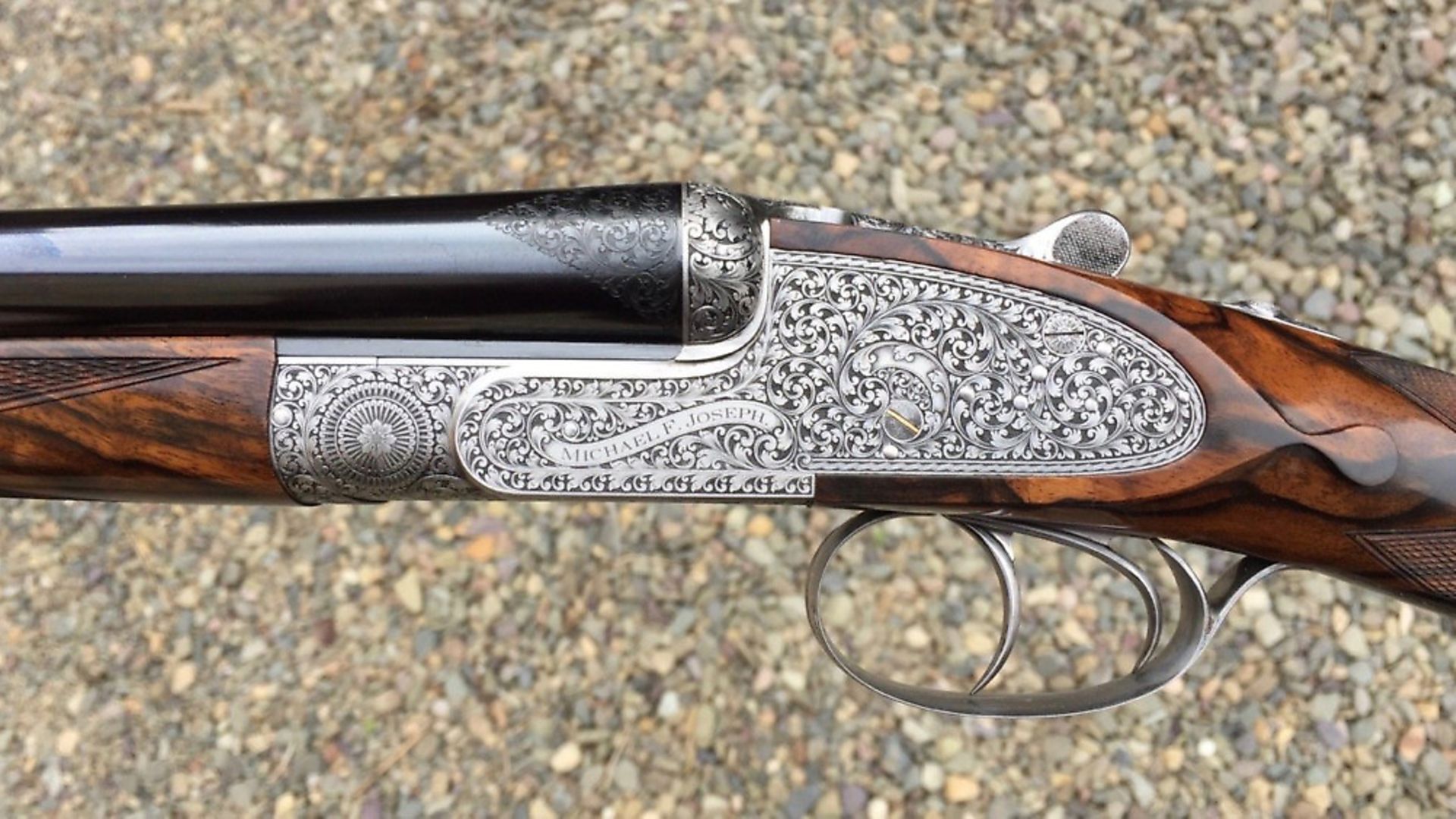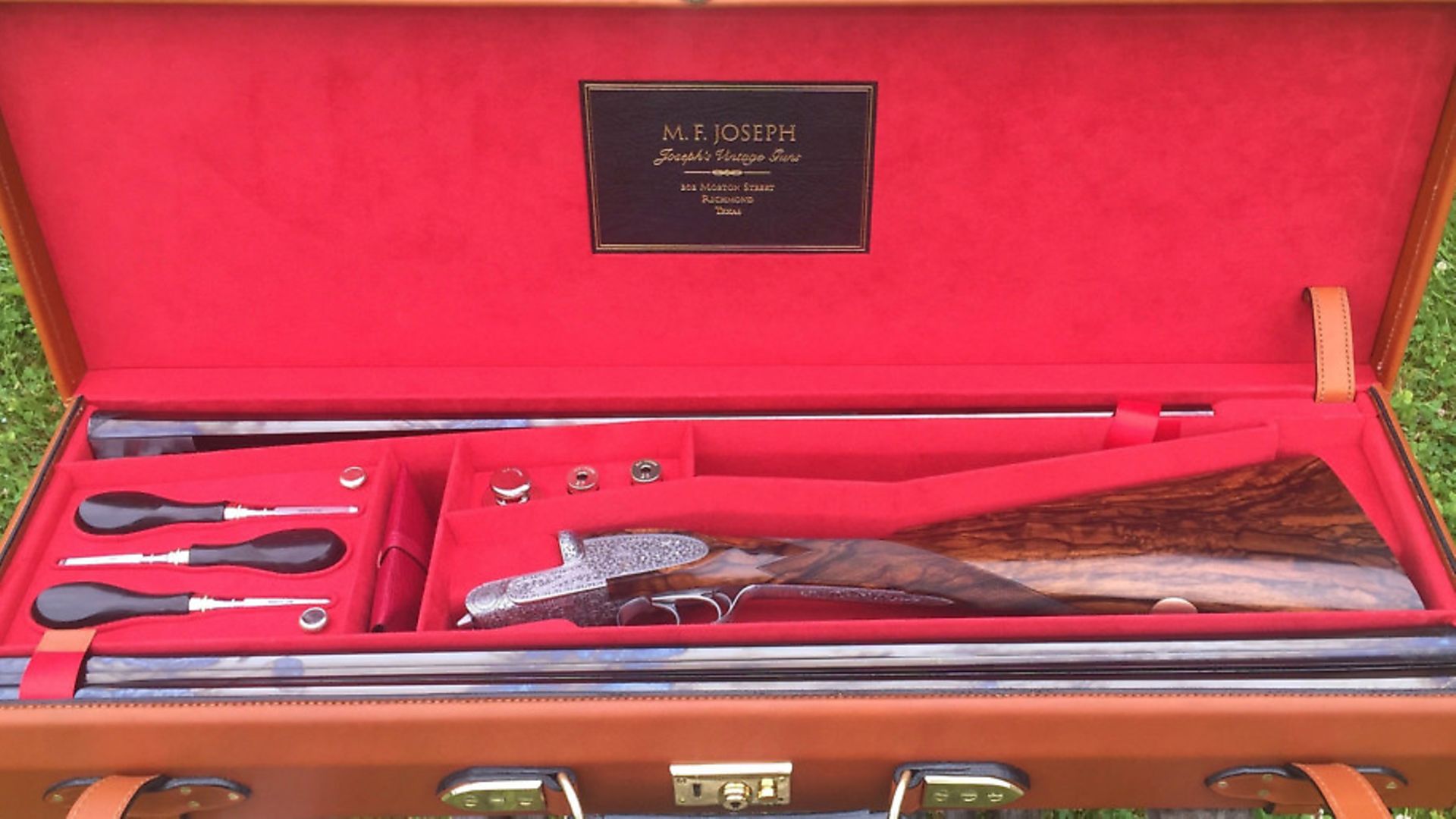Classic gun expert Diggory Hadoke sets out to build a ‘better-than-best’ brand-new sidelock ejector, for less money than you would pay one of the famous makers... the result is stunning
 credit: Archant
credit: Archant
I live in a world populated by gun enthusiasts. They are mostly people who appreciate, collect and shoot the best of our gunmakers of old. I find guns of all types for clients, from provincial hammer guns to 1930s self-opening sidelocks, and we often undertake extensive restoration work, re-stocking, re-barrelling and the like.
Customisation of an old gun to suit a modern shooting man is one of my favourite projects. However, occasionally I get asked to build a gun from scratch for a client. These guns are always classic British designs but they are brand new. Effectively, the challenge I was posed was this: can you build me a sidelock ejector better than one of the famous makers for less money?
For my answer, I looked to the past. When Purdey were asked to build a gun for royalty, they put their very best men on each task. In the normal course of events, a gun goes through the factory and the owner has no control over who does what. I decided that to be better than ‘best’ I had to ensure that every part of the build process was carried out by the best man available today. I would design, specify and project manage the operation.
 credit: Archant
credit: Archant
The gunmakers I chose for each stage would determine the quality of the finished product. I thought readers may be interested in the process and the product that emerged from one such commission.
THE HIGHEST QUALITY GUN FOR LESS MONEY
The order came during a conversation in London with an American collector and sportsman. Michael was considering ordering a new sidelock from one of the London firms. Not one of the best known, but a bespoke builder nonetheless. On questioning his motives, it transpired that the prices of Purdey or Holland & Holland guns were just too high for comfort. But what if he could have a gun of the highest quality for a lot less money? Tempting. But what name would the gun carry?
Brand value is a key thing in resale. However, a new gun drops a pile of cash in value immediately, regardless of the maker. A famous name is no indication that a new gun is a good investment. New guns are not good investments; they are to be ordered and enjoyed. So, I suggested, why not have your own name on the gun? Be involved; effectively, be the gunmaker. If we build it well, generations from now, people will admire it and wonder about how such a lovely gun came into being. Your name lives on with the gun.
DECIDING ACTIONS, BARRELS & ENGRAVING
First, we decided on the action type. This client has always favoured the Holland & Holland ‘Royal’ over anything else. Therefore, we decided to base the gun on that. It would be a self-opener on the Holland 1922 patent. It was to be a ‘game weight’ 12-bore with 30” barrels and straight-hand stock. For a fitting, I had Chris Batha provide the dimensions after a session with Michael at the Southern Side-by-Side Exhibition in the US.
Meanwhile, I commissioned a set of best chopper-lump barrels, made from English tubes, from Bill, top barrel maker and formerly employed by Holland & Holland. Working in tandem with Bill, actioner Mark, also formerly with Holland & Holland, produced the action and parts, all handmade in his workshop, from forgings.
Once barrelled and proof-tested in London for 70mm nitro, the gun went for stocking to Steph, also a former Holland & Holland employee and top stocker. I chose a walnut blank that I thought to be the right balance, with traditional colours and figure – straight, dark lines, some contrast and movement but not too fussy. I don’t believe wood should dominate the gun; it should complement the rest of it.
For engraving, Sam, who works for Holland & Holland, was chosen as I think his work is outstanding, especially when given the time and budget to apply his artistic talents to the best of his ability. We discussed the ideas to include in the engraving, the depth of the relief of bold foliage and the inclusion of Michael’s monogram in the bar, inlaid in gold. Fence style and the addition of engraving borders and panels on the breech ends of the barrels were facets that Michael wanted to get just right, so work on these was painstaking.
Once the gun was engraved and hardened, it went for finishing to Dave, formerly with Purdey and one of the very best in the business. Dave has re-finished guns for me many times and his work is superb. The right finisher brings a gun together and provides the last few percentage points that mark it out as special. Dave handed the gun over ready to go. It was beautiful work and I was both delighted and relieved that everything had come out according to plan.
THE FINAL TOUCHES
A gun like this deserves a case to show it off, so we went for the best that can be made. Oak and leather, Alcantara lined, brass fittings and a canvas and leather outer cover. We designed and had made gold-embossed, leather case labels especially for Michael, showing his address and company details.
To complement the package, I commissioned a set of bespoke English-made turn-screws and brushes, oil bottle and snap caps, all personalised to Michael. No detail was spared in this build.
We set out to better the best and beat them on price. We had no interest in producing a ‘cut price Holland & Holland’. I was determined to make Michael the best Holland & Holland we possibly could. I think the finished result speaks for itself.
So, what of cost? A new Holland & Holland is over £100,000 in its basic form. A basic new Purdey is over £120,000 with the VAT. Michael’s gun came in at a little over £46,000. A lot of money. But if you are in the market for something like this, it is a lot less than you would pay elsewhere. In that context, it is three years’ of depreciation on a Range Rover Vogue.
Michael has shot English pheasants with his new gun, and it now resides in Texas as a demonstration of the quality of work we can produce to order. Not content with a 12-bore, Michael ordered a 20-bore with two sets of barrels to sit alongside the first gun. That was finished this month and fitted in a lighter leather case, for ease of transport.
In these days of increasing mechanisation in gunmaking, we have demonstrated that it is still possible and cost effective to build the very best by hand in England, with no compromises.